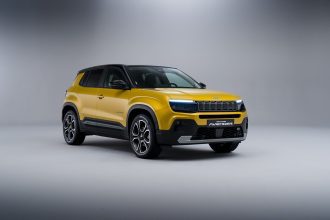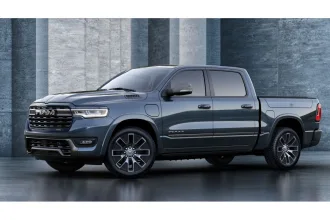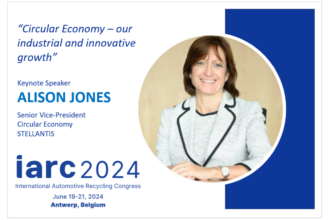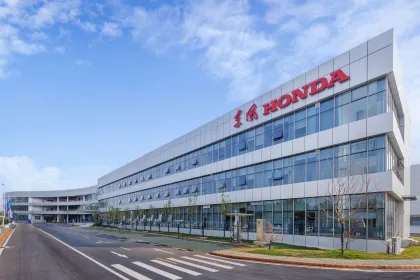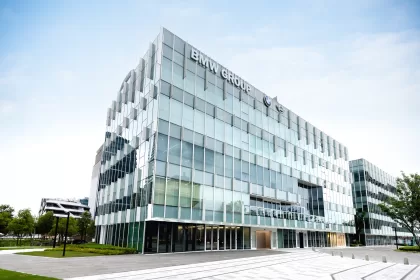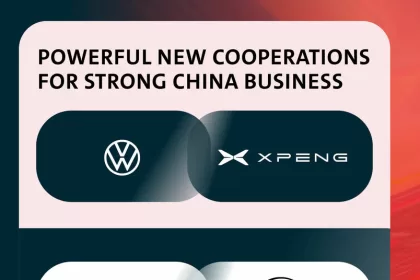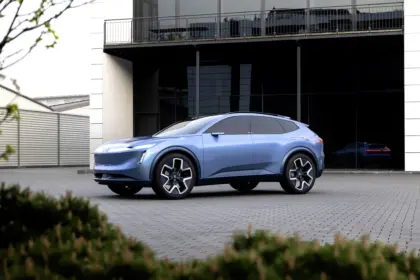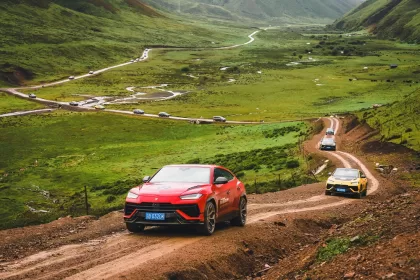- Volkswagen China Technology Company takes on key development task: First China-specific electric platform will increase product portfolio in entry-level segment
- Volkswagen expands production, development and innovation hub in Hefei: high degree of localisation strengthens product focus on Chinese customers’ wishes
- Latest technologies speed up development and production while ensuring Volkswagen’s high standards of quality and safety
- Close integration of the development unit with joint venture companies and partners such as Gotion in battery technology also increases efficiencies
- Ralf Brandstätter, Volkswagen AG Board Member for China: “We are developing Hefei into the centre of our ‘in China, for China’ strategy and a strong interface between all our joint venture companies and local partners. This boosts efficiency, increases the speed of development and optimises our cost structure.”
The Volkswagen Group is systematically strengthening its development expertise ‘in China for China’. To drive this strategy, Volkswagen is expanding its site in Hefei in eastern China into a state-of-the-art production, development, and innovation hub. At its heart is the Volkswagen China Technology Company (VCTC) – the Group’s largest development centre outside Germany, with a clear focus on intelligent, fully connected vehicles. VCTC aims to reduce the time to market for vehicles and components by 30 percent through efficient development processes and the use of cutting-edge technologies.
As a result, the Group will better harness the growth momentum of the Chinese market. The hub is also taking on key development tasks, including the development of a local electric platform for the entry-level segment. Derived from the Group’s modular electric drive matrix (MEB), the new platform is intended to open up further market segments in China. From 2026, the platform will form the basis for additional battery-powered vehicles (BEV) specifically tailored to the wishes of Chinese customers. The development time of just 36 months is around a third shorter than the Volkswagen Group’s previous timescales.
Ralf Brandstätter, Volkswagen AG Board Member for China, said: “With our ‘in China, for China’ strategy, we are fully integrating ourselves into China’s industrial ecosystem. This enables us to customise our products even faster to meet the needs of Chinese customers. In a dynamic market environment, a high pace of development is crucial for competitiveness. The Volkswagen China Technology Company in Hefei is the central interface between all our joint venture companies and our Chinese partners, allowing us to make all decisions on products for China directly in China and launch them onto the market quickly. This boosts efficiency, increases the speed of development, and optimises our cost structure.”
China-specific electric platform strengthens profitability and competitiveness through 100 per cent localisation
Under its ‘in China for China’ strategy, Volkswagen is pursuing comprehensive localisation in development and procurement for its first China-specific electric platform. China-specific solutions for the battery, electric drive and electric motor will be used for the e-platform, ensuring high-cost efficiency and rapid market readiness. The Group’s product portfolio in China, which is being expanded towards the mid-range through the cooperation with the Chinese manufacturer XPENG, can now also be supplemented in the entry-level segment.
Mr Brandstätter added: “With the development of a China-specific platform for the entry-level segment, we are taking on significant development tasks in China for China. We will bring the platform to market maturity in just 36 months. This means that we are reducing the development time by around a third and can quickly tap into new customer groups in the dynamic e-car market in China. That way we utilise the full potential of the tech hub in Hefei.”
Optimisation of the organisational structure increases the efficiency of collaboration
The state-of-the-art production, development and innovation hub in Hefei is a key pillar of the company’s ‘in China for China’ strategy. The hub will allow the Group to address market-defining trends in China at an early stage and better utilise the growth momentum and innovative strength of the Chinese market. Another key pillar is the Volkswagen Anhui joint venture, with a plant that will start production in the coming weeks, as well as the VW Anhui Component Company, with its production facility for high-voltage battery systems.
Erwin Gabardi, CEO Volkswagen Anhui, said: “We are systematically developing Hefei into the Volkswagen Group’s innovation hub in China. And we are stepping up the pace. We have already demonstrated this with the construction of the Volkswagen Anhui factory in just 18 months. We are specifically utilising new technologies and the outstanding infrastructure of the eastern Chinese province of Anhui. Its capital Hefei has developed into the Silicon Valley of China. We will also benefit from this innovative strength.”
With VCTC, Volkswagen is bundling all development units and decision-making processes in Hefei for vehicles destined for the Chinese market. This reduces interfaces between the different areas and increases efficiency. Coordination between teams also takes place in the same time zone and with a sole focus on the local market. In addition, the tech company brings together vehicle and component development and procurement right from the start of the development process. Simultaneous work saves additional time and enables an optimised cost structure.
Further synergies are being realised through the close networking of development work with the joint venture companies SAIC Volkswagen, FAW-Volkswagen and Volkswagen Anhui as well as with Gotion (battery) and the Chinese manufacturer XPENG. The partners Horizon Robotics (autonomous driving), ARK (user experience) and Thundersoft (infotainment) are also involved in close cooperation with CARIAD, Volkswagen’s software unit.
High localisation rate and early involvement of suppliers create cost benefits
VCTC also integrates state-of-the-art technologies from local suppliers in the early product development phase in order to benefit even more from the innovative strength of the market. A 450,000 square metre supplier park is being built in Hefei for this purpose. Around 1,100 local suppliers provide both hardware and software, enabling state-of-the-art technologies and application concepts to be integrated into new products at an early stage. The localisation rate is to be gradually increased up to 100 per cent. This also applies to the quality testing of supplier parts, which will create further cost benefits.
Marcus Hafkemeyer, CTO of Volkswagen Group China, said: “By closely interlinking our development and procurement teams and involving local suppliers and partners in product development at an early stage, we are increasing productivity. We are becoming more agile and faster. We are also using innovative technologies to safely accelerate our development, testing and production processes. But one thing is clear: we are preserving our Volkswagen DNA and are not compromising on quality and safety.”
1,200 specialists are currently working at VCTC in Hefei. Around 3,000 are expected to be working there by the end of next year. Their work is focused on three clear goals: High development speed, great cost efficiency, while at the same time strengthening Volkswagen’s standards of quality and safety through various measures including the use of state-of-the-art technologies.
World debut: electric vehicle test shortens test phase for vehicles from three months to one
At VCTC, the testing phase for electric vehicles in certain scopes can be reduced from three months to one based on development tests in a so-called E-4 poster system. Through this system, for the first time, a vehicle can be subjected to the highest loads in an in-house endurance test with an active battery. It can also simulate an entire vehicle life cycle, including charging and discharging the battery. This is a world debut in the automotive industry as until now such tests were only possible on special open-air circuits. It guarantees maximum safety and durability for the customer while requiring less time.
VCTC is also using virtual reality (VR) for its ultra-modern test and simulation infrastructure. VR technology is used from the earliest stages of the design process to identify potential improvements to the vehicle body, controls and ergonomics even before the first prototypes are created. This saves costly reworking in the design phase and also ensures comfort and quality for the customer.
Manufacturing processes in production significantly accelerated through the use of innovative technologies
The manufacturing processes at the Volkswagen Anhui plant are also being significantly accelerated. This includes the use of laser technology and computer tomography to analyse the entire car body or individual vendor parts for quality, safety, and durability in just a few minutes. Detailed and time-consuming analyses are no longer necessary, without compromising on quality.
More speed in production and development, high technical localisation, and consistent customer orientation are the key for Volkswagen Group China to play a leading role in the new era of intelligent connected vehicles (ICV) as part of the ‘in China for China’ strategy.


